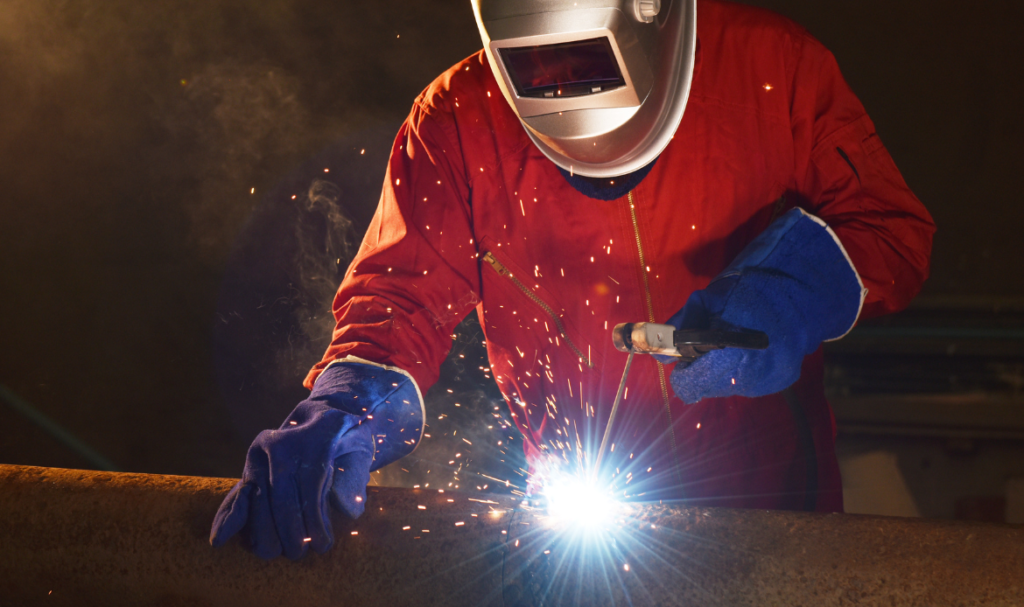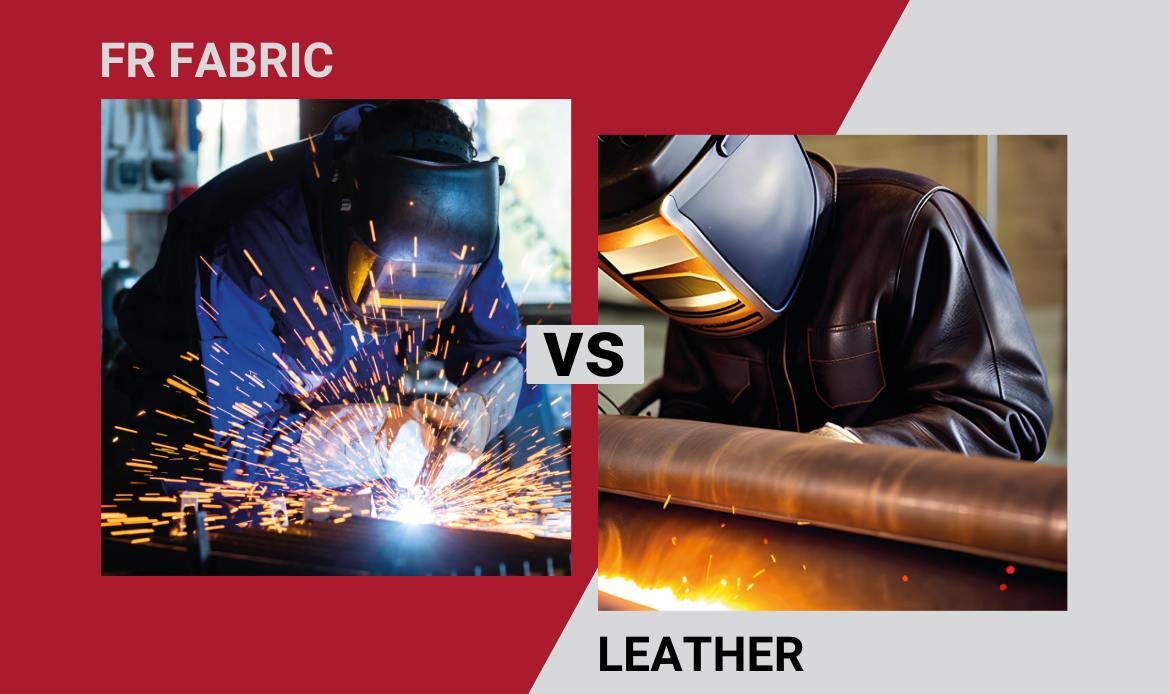TECHNICAL WELDING FABRICS OR LEATHER FOR WELDERS?

While leather is a popular choice for protecting against welding hazards, it can be heavy and cumbersome to wear, particularly in full-body garments. Technical welding fabrics, on the other hand, can provide superior protection and comfort for welders.
Fire-retardant fabrics are a good option for welding PPE as they offer excellent protection against heat, sparks, and other welding hazards. These fabrics are also lightweight and breathable, providing the wearer with greater comfort and mobility during work.
Moreover, technical fabrics can be designed to cover the entire body, providing full protection against welding hazards. This is particularly important for welders who work in close proximity to other workers or in confined spaces, where the risk of exposure to welding hazards is increased.
BOTH FR (flame-resistant) fabric and leather are popular materials for welding safety gear, and each has its advantatges and disadvantatges.

Here are some pros and cons of both materials:
Leather for welders:
–Pros:
- Heat Resistance: Leather offers good high heat protection
- Durability: Leather is a durable material that can withstand daily wear and tear
- Protection: Leather is a thick and robust material that can protect against sparks, slag, and other debris commonly found in welding environments.
–Cons:
- Weight: Leather can be heavy and cumbersome to wear for long periods, which can cause fatigue and discomfort.
- Cost: Leather safety gear can be more expensive than other materials, which can be a consideration for welders on a budget.
- Maintenance: Leather requires regular maintenance to keep it in good condition, including cleaning and conditioning.
FR Fabric for Welders
–Pros:
- Lightweight: FR fabric is typically lighter in weight than leather, which can reduce fatigue and improve mobility for welders.
- Breathable: FR fabric is typically more breathable than leather, which can help prevent overheating and sweating.
- Protection: Welders working in high-risk environments with fire or electrical hazards may prefer FR fabric.
–Cons:
- Durability: FR fabric may not be as durable as leather.
- Cost: FR fabric may be more expensive than other materials used for welding safety gear.
In summary, while leather may be an acceptable choice for certain welding applications, technical welding fabrics offer superior protection, comfort, and coverage for welders. We recommend using fire-retardant fabrics that comply with the applicable standards for optimal protection and safety.
If you have any questions or comments…
Deprecated: implode(): Passing null to parameter #1 ($separator) of type array|string is deprecated in /var/www/vhosts/marinatechnicaltextiles.com/httpdocs/wp-includes/category-template.php on line 1377
Tagged fr fabricsleatherfabricstechnical fabricsWELDINGWELDING HAZARDSWELDING PPE

